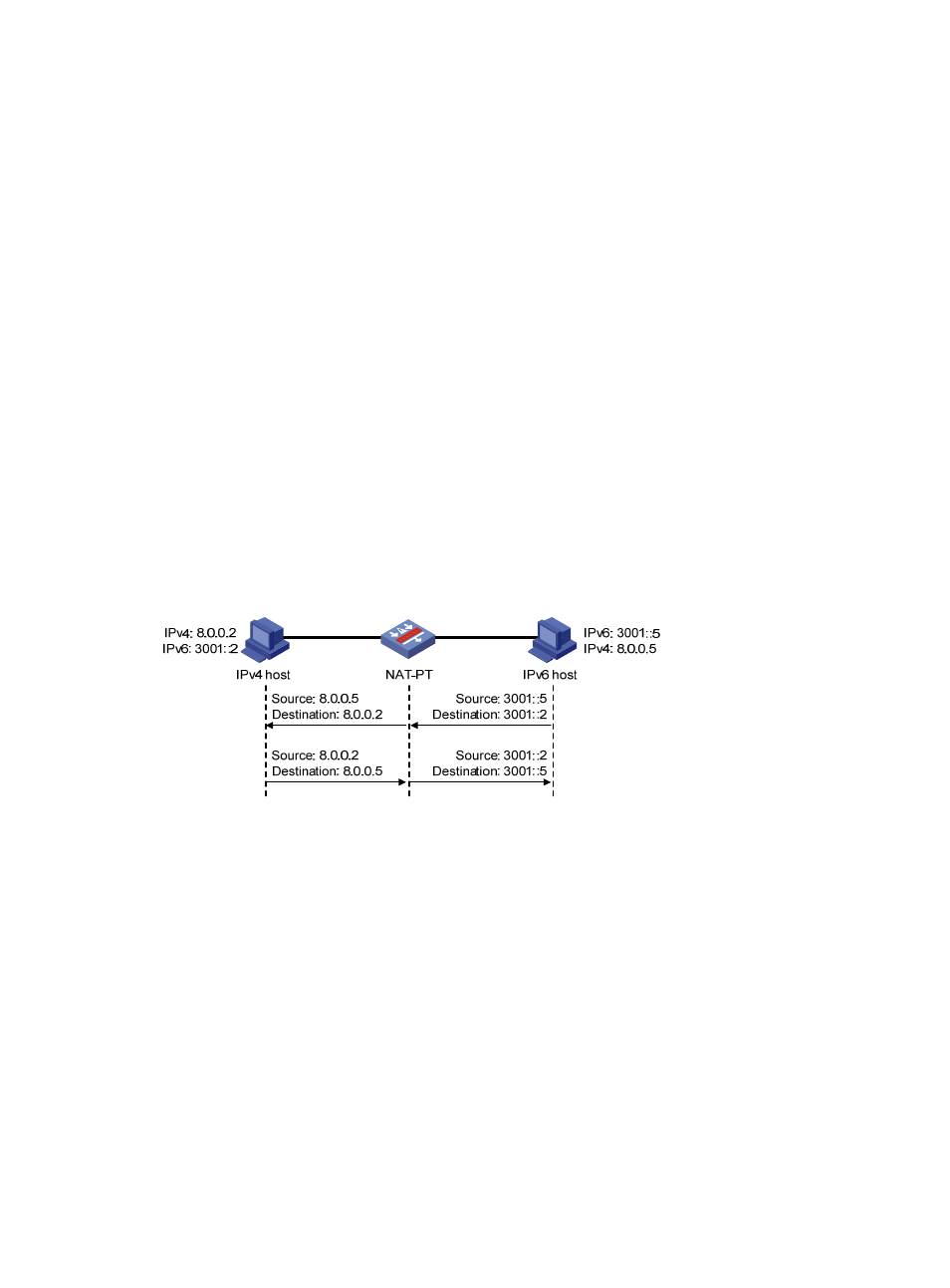Nat-pt prefix, Implementing nat-pt, Session initiated by an ipv6 host – H3C Technologies H3C SecPath F1000-E User Manual
Page 187

2
Dynamic mappings are dynamically generated for translation between IPv6 and IPv4 addresses.
Different from static mappings, dynamic mappings are not fixed one-to-one mappings between IPv6 and
IPv4 addresses.
3.
NAPT-PT
Network Address Port Translation – Protocol Translation (NAPT-PT) realizes the IPv6 TCP/UDP port
number to IPv4 TCP/UDP port number translation besides static or dynamic address translation. With
NAPT-PT, different IPv6 addresses can correspond to one IPv4 address. Different IPv6 hosts are
distinguished by different port numbers so that these IPv6 hosts can share one IPv4 address to
accomplish the address translation and save IPv4 addresses.
NAT-PT prefix
The 96-bit NAT-PT prefix in the IPv6 address prefix format is used in the following cases:
•
Upon receiving a packet from an IPv6 host to an IPv4 host, the NAT-PT device detects the prefix of
the destination IPv6 address in the packet. If the prefix is the same as the configured NAT-PT prefix,
the device will translate source and destination IPv6 addresses of the packet into IPv4 addresses.
•
After a packet from an IPv4 host to an IPv6 host is translated through NAT-PT, the prefix of the
translated source IPv6 address is the configured NAT-PT prefix.
Implementing NAT-PT
Session initiated by an IPv6 host
Figure 2 NAT-PT implementation (session initiated by an IPv6 host)
NAT-PT works as follows:
1.
Determines whether to perform NAT-PT or not
Upon receiving a packet from an IPv6 host to an IPv4 host, the NAT-PT device detects the prefix of the
destination IPv6 address in the packet. If the prefix is the same as the configured NAT-PT prefix, the
device considers that the packet needs to be forwarded to the IPv4 network and NAT-PT needs to be
performed.
2.
Translates the source IP address
The NAT-PT device translates the source IPv6 address of the packet into an IPv4 address according to the
static or dynamic mapping on the IPv6 side.
3.
Translates the destination IP address
The NAT-PT device translates the destination IPv6 address of the packet into an IPv4 address according
to the static mapping, if configured, on the IPv4 network side. Without any static mapping configured on
the IPv4 network side, if the lowest 32 bits of the destination IPv6 address in the packet can be directly
